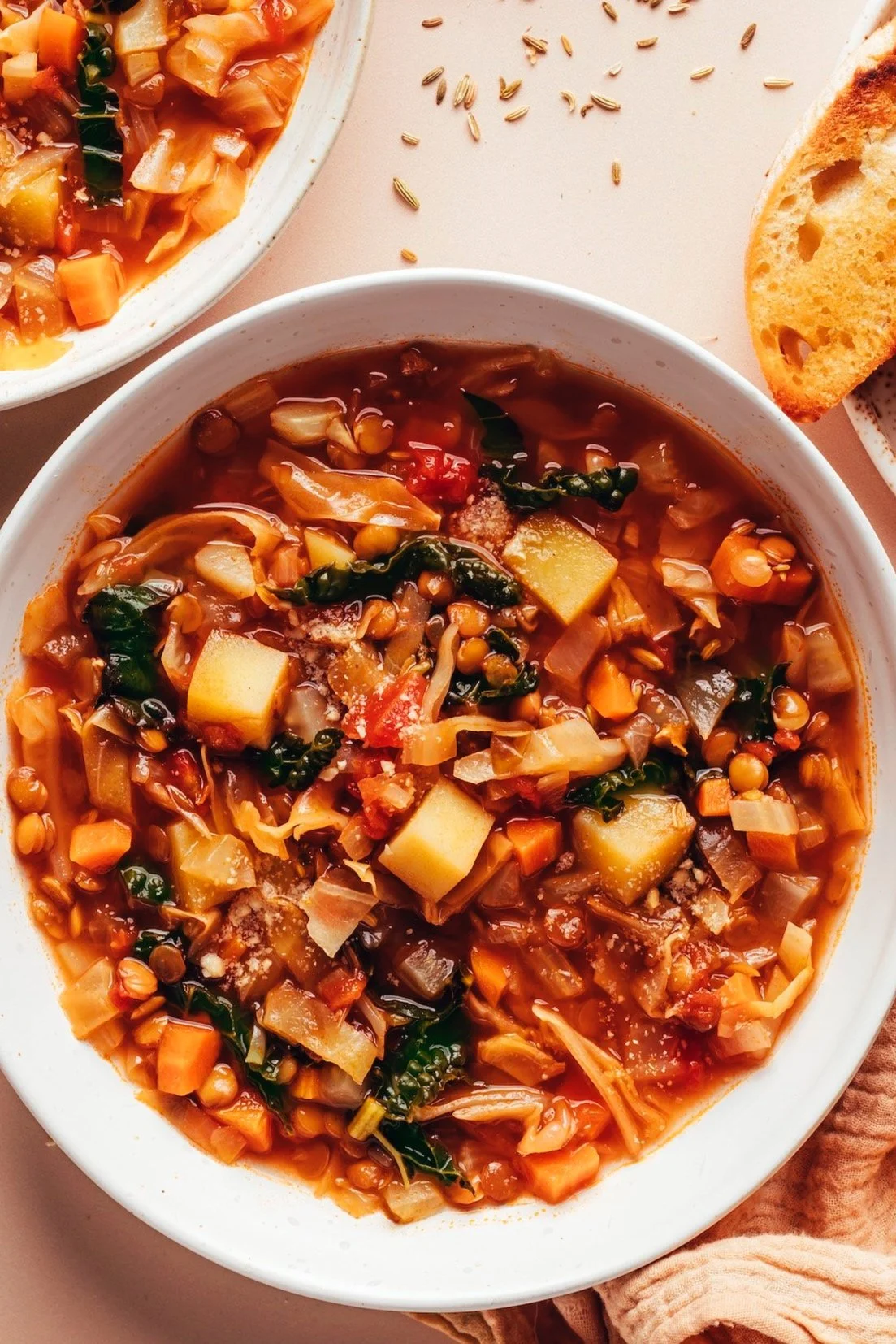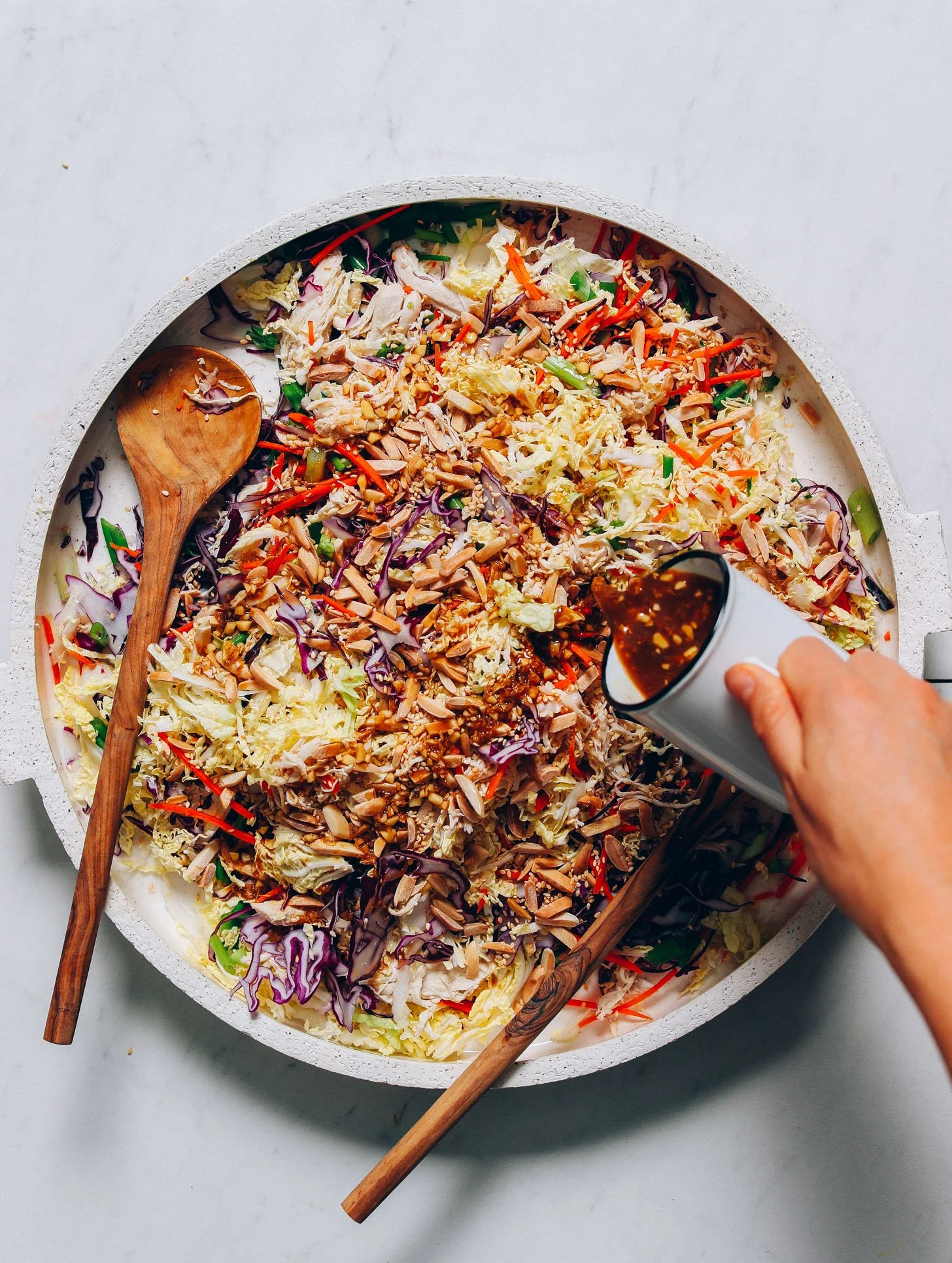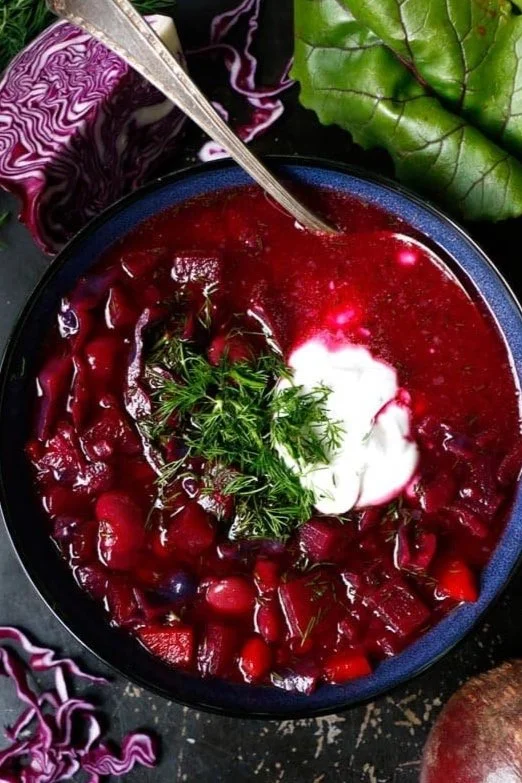It’s Time To Stop Ignoring Cabbage!
Hello!
Cabbage is a forgotten vegetable—it’s not glamorous or trendy like kale, mustard greens, chard, or arugula! With groceries as expensive as they are and awareness of cabbage’s nutritional benefits, it’s time for the resurrection of this versatile and inexpensive vegetable.
Why is this humble vegetable ignored? Cabbage has a long history of being the food of the poor. In the 15th century, a Parisian resident wrote that poor people ate cabbages and turnips instead of bread. (Source) Perhaps, this silly view continues, and people don’t want to be associated with it.
Cabbage also has a strong aroma that can linger for hours after cooking, and people often avoid it because it can make them gassy and bloated. However, it creates only a bit more gas than kale and much less than any legumes. If you are concerned about bloating and gas, avoid eating gas-inducing vegetables daily and consider taking digestive enzymes before or during meals.
Cabbage is a cruciferous vegetable along with broccoli, cauliflower, kale, and Brussels sprouts. I enjoy all these vegetables, but I started cooking more with cabbage a few years ago because I love coleslaw salads in the summer and a hot bowl of borscht in the winter. Now, there are many more reasons to purchase it regularly:
Cost
We are all aware of inflation’s impact on our grocery bills. Many items have doubled in cost, and some of my favourite green vegetables like kale and chard are just too expensive to eat regularly. Cabbage continues to be very affordable, often costing ½ of the other trendier vegetables. I checked prices at my grocery store a few days ago, and a wilted-looking chard was $4.99. A very large, healthy green cabbage was on sale for .99 cents.
We try to follow The EWG’s Shopper's Guide to Pesticides in Produce, two lists: The Dirty Dozen (produce most contaminated with pesticides) and The Clean Fifteen (produce least contaminated with pesticides), and only purchase organic items on the dirty dozen list, which, of course, is an added cost. Kale, collard, and mustard greens are on the dirty dozen list, while cabbage is on the clean fifteen list, so there is no need to purchase organic cabbage.
Cabbage has a longer fridge life than many other leafy greens. It can last several weeks, even up to a month, when stored properly. In contrast, delicate greens like lettuce and spinach typically only last a week or less. I’ve never had cabbage spoil, but I have lost count of how many times chard and kale have wilted and gone bad because I didn’t use them shortly after purchasing them.
Nutritional Benefits
Vitamins: Cabbage is an excellent source of Vitamin C, which boosts the immune system, and Vitamin K, essential for blood clotting and bone health.
Minerals: It contains important minerals like potassium, which helps regulate blood pressure, and manganese, which is vital for metabolism.
Gut Health: Cabbage benefits gut health because its high fibre content supports digestive function and promotes a healthy gut microbiome.
Low in Calories: Cabbage is low in calories, making it an ideal choice for those looking to manage their weight without sacrificing nutrition.
Antioxidants: It contains antioxidants such as glucosinolates, which may help reduce the risk of certain cancers.
Varieties of Cabbage
Green Cabbage: The most common variety, often used in salads, slaws, and cooked dishes.
Red Cabbage: Slightly sweeter and more colourful, it’s great for salads, pickling and borscht.
Savoy Cabbage: Known for its crinkled leaves, this milder-tasting vegetable is excellent in soups and stir-fries.
Napa Cabbage: Chinese cabbage has a sweeter flavour and is often used in Asian cuisine, particularly in stir-fries and kimchi.
Culinary Versatility
Salads and Slaws: Shred cabbage for a crunchy salad or coleslaw. Mix with carrots, apples, or nuts for added flavour and texture.
Stir-Frying: Quickly sauté cabbage with garlic and soy sauce for a delicious side dish.
Soups and Stews: Add chopped cabbage to soups for a hearty, nutritious boost.
Fermentation: Cabbage is the primary ingredient in sauerkraut and kimchi, both make an excellent side for any meal.
Stuffed Dishes: Use cabbage leaves to wrap fillings (like rice and lentils) for stuffed cabbage rolls.
Recipes
I’ve made all of the below recipes except for the cabbage rolls. It had great reviews, so I added it and will try it later. The Crunchy Slaw Salad includes chicken, and since I follow a plant-based diet, I exclude it, but sometimes I’ll add some roasted tofu. I’ve made the sauerkraut and it was ok, but we have a local fermination company that makes the most amazing sauerkraut and kimchi, Pyramid Ferments and we purchase from them. We eat sauerkraut or kimchi daily as they are easy to add to any dish. The roasted cabbage is delicious in salad or as a side for any main dish. The soup and borscht are delightful, especially on a chilly day.
Give cabbage a worthy place in your diet. Enjoy this underrated and very affordable vegetable while reaping its many health benefits.
Do you have any cabbage recipes to share? If so, please post them in the comments below.
I hope you are spending time with loved ones this long weekend.
Be well.
Anita
DISCLAIMER; The information provided on County Yoga Loft’s website blog is for general health care informational purposes only. All information on the site is provided in good faith. However, it should not replace consultation or advice from a physician and/or other healthcare practitioners. The use or reliance of any information contained on this site is solely at your own risk.








